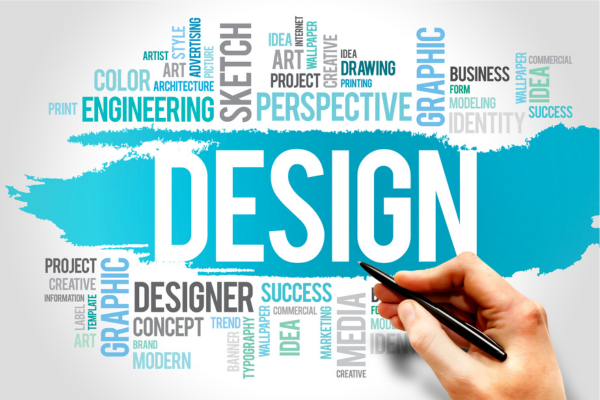Design is a dynamic and ever-evolving field that has continuously transformed throughout history. From its earliest origins in ancient civilizations to the present day, design has adapted to reflect the changing needs, advancements in technology, and shifts in cultural trends. It is a discipline that encompasses a wide range of creative practices, from architecture and industrial design to graphic design and user experience.
The evolution of design is a fascinating journey that allows us to understand the progress and development of human creativity. It is through the exploration of the past that we can gain valuable insights into the foundations and principles that have shaped design as we know it today. By tracing the path of design’s evolution, we can better appreciate the significance of key milestones, influential movements, and the pioneering individuals who have made indelible contributions to the field.
In ancient civilizations, design emerged as a means to fulfill both functional and aesthetic purposes. The Egyptians, for example, employed design principles to construct monumental structures that reflected their societal values and religious beliefs. The Greeks, on the other hand, pursued an idealized sense of harmony and balance in their architecture and art. These early designs laid the groundwork for future developments in design, setting the stage for the creative expressions that would follow.
The Renaissance period marked a significant turning point in design history. It was a time of profound cultural and intellectual change, characterized by a renewed interest in classical art, literature, and philosophy. Artists and thinkers of the Renaissance embraced a holistic approach to design, merging science, mathematics, and artistic expression. Through their innovative work, they not only revived ancient design principles but also paved the way for new approaches that would shape design for centuries to come.
The Industrial Revolution brought about a paradigm shift in design, propelled by advancements in manufacturing processes and the rise of mass production. Designers were faced with the challenge of creating functional yet aesthetically pleasing products on a large scale. This era witnessed the birth of industrial design, where designers embraced new materials and technologies to create innovative solutions that catered to the needs of a rapidly changing society.
As design continued to evolve, the modernist movement emerged, characterized by a focus on functionality, simplicity, and the rejection of ornamentation. Modernist designers sought to create designs that were streamlined, efficient, and responsive to the demands of the modern world. This approach had a profound impact on architecture, graphic design, and product design, influencing the way we perceive and interact with the built environment.
In contrast, postmodernism challenged the rigidity of modernism and embraced a more eclectic and playful approach to design. Designers drew inspiration from diverse sources, incorporating historical references, cultural motifs, and irony into their work. Postmodern design celebrated individuality, diversity, and the breaking of traditional design rules, opening up new possibilities and perspectives within the field.
Today, design is at the forefront of technological advancements, shaping the digital landscape and influencing the way we experience the world. The rise of digital technology, the internet, and mobile devices has given rise to new design disciplines, such as user experience design and interaction design. Designers now face the challenge of creating seamless and intuitive experiences across various digital platforms, taking into account the complexities of human behavior and the ever-changing technological landscape.
I. The Origins of Design
The roots of design can be traced back to ancient civilizations, where it served both functional and aesthetic purposes. The Egyptians, for example, incorporated intricate designs and hieroglyphics in their architecture, tombs, and everyday objects. The Greeks, on the other hand, focused on balance, proportion, and harmonious aesthetics in their art and architecture. These early designs laid the foundation for principles that would later shape the field of design.
II. The Renaissance: A Rebirth of Design
The Renaissance period marked a significant turning point in the evolution of design. It was a time of rediscovery, where classical art, philosophy, and humanism flourished. Artists and thinkers such as Leonardo da Vinci and Michelangelo embraced the principles of proportion, perspective, and anatomy, revolutionizing art and design. The Renaissance era introduced new techniques, materials, and artistic sensibilities that laid the groundwork for future design movements.
III. The Industrial Revolution: Design Meets Mass Production
The Industrial Revolution of the 18th and 19th centuries brought about a seismic shift in design. Advancements in manufacturing processes and machinery enabled mass production, revolutionizing the availability and affordability of goods. Designers adapted to this new era by creating products that were not only functional but also aesthetically pleasing. The Eiffel Tower and the Crystal Palace are iconic examples of design achievements during this period.
IV. Modernism: Functionality and Simplicity
The modernist movement emerged in the late 19th and early 20th centuries, emphasizing functionality, simplicity, and the elimination of unnecessary ornamentation. Designers such as Le Corbusier and Walter Gropius embraced the principles of form follows function and championed the use of new materials and technologies. Modernist design left an indelible mark on architecture, furniture, and graphic design, promoting clean lines, geometric shapes, and minimalistic aesthetics.
V. Postmodernism: Breaking the Rules
Postmodernism challenged the rigidity of modernism and introduced a more eclectic and playful approach to design. Designers like Ettore Sottsass and Philippe Starck defied conventions, incorporating bold colors, patterns, and historical references into their work. Postmodern design celebrated individuality and rejected the notion of a single design style, paving the way for diverse expressions within the field.
VI. The Digital Age: Design in the Technological Era
The advent of digital technology and the internet in the late 20th century ushered in a new era of design. The rise of computer-aided design (CAD), 3D printing, and user interface design revolutionized the way designers conceptualize and create their work. The digital age opened up new possibilities for interactive design, web design, and multimedia experiences, transforming the way we engage with design in our daily lives.
VII. Sustainable Design: Designing for a Better Future
In recent years, there has been a growing emphasis on sustainable design practices. Designers are incorporating eco-friendly materials, renewable energy sources, and circular economy principles into their projects. Sustainable design seeks to minimize the environmental impact of products and promote social responsibility. It is a response to the pressing need for environmentally conscious design solutions in an era of climate change and resource depletion.
Conclusion
Design has traversed a remarkable journey of evolution, adapting to the needs and aspirations of each era. From ancient civilizations to the Renaissance, from the Industrial Revolution to modernism, from postmodernism to the digital age and sustainable design, the field has continually transformed. Design has become an integral part of our lives, shaping our environments, influencing our behaviors, and enhancing our experiences.
In today’s fast-paced and interconnected world, design has taken on new dimensions. User-centered design has become a critical approach, focusing on creating intuitive and seamless experiences for users across various platforms and devices. Design thinking methodologies have also gained prominence, emphasizing empathy, collaboration, and iterative problem-solving. Design has expanded beyond physical products and now encompasses digital interfaces, user experiences, branding, service design, and more.
As we look to the future, design will continue to evolve and play a vital role in addressing complex global challenges. The rise of emerging technologies like artificial intelligence, virtual reality, and augmented reality presents new opportunities and challenges for designers. These technologies have the potential to revolutionize industries, reshape how we interact with the world, and create new possibilities for design innovation.
Furthermore, the importance of sustainability in design cannot be overstated. Designers have a responsibility to create environmentally conscious solutions that minimize waste, conserve resources, and promote social equity. Sustainable design practices, such as using recycled materials, adopting renewable energy sources, and designing for circularity, are crucial in mitigating the impacts of climate change and fostering a more sustainable future.
In conclusion, the evolution of design is a testament to the creativity, adaptability, and ingenuity of designers throughout history. From ancient aesthetics to modernist principles, from industrial production to digital transformations, design has shaped our world and influenced how we interact with it. As designers, we have the power to drive positive change, create meaningful experiences, and shape a better future through the continued evolution of design.



